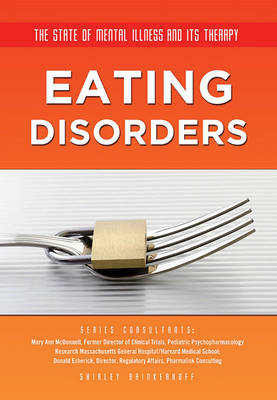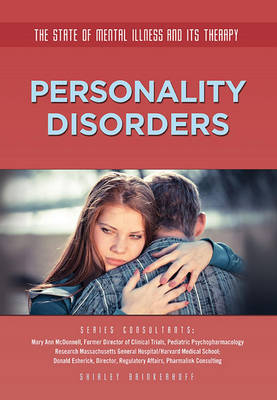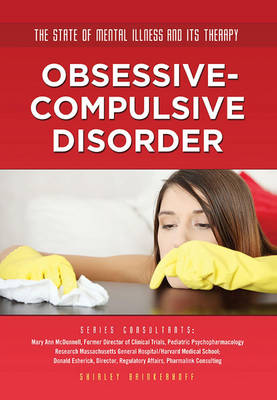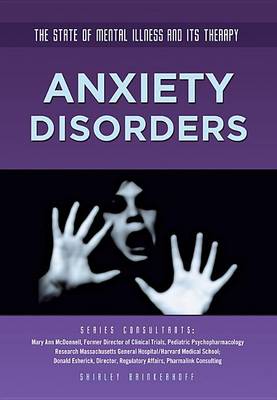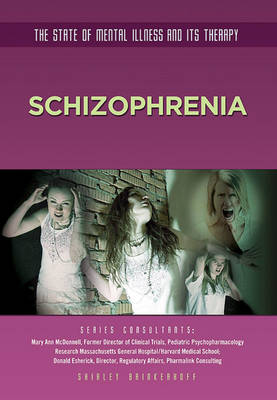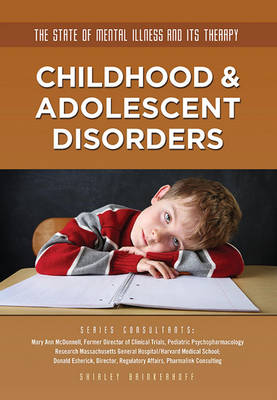The State of Mental Illness and Its Ther
6 total works
A high school student allows herself to eat less than six hundred calories a day. Months go by as her body withers. Her friends and family are aghast at her emaciated appearance. Nevertheless, she still agonizes over being "too fat." A college student regularly downs six or seven thousand calories in a single hour. Then she makes herself throw up before her body can digest the massive amount of food. Eating disorders like these affect five million people each year in America alone, and many more millions in other countries. Ninety percent of those who have eating disorders are females. More than ten percent of the people hospitalized with anorexia nervosa will die as a result of the disease. Eating Disorders tells the stories of two young women who struggle with anorexia and bulimia and how they found help. Although eating disorders are among the most difficult of psychiatric illnesses to treat, new advances in care are being made. Many individuals with eating disorders are helped by concerned health professionals and by treatment programs that use the latest medical, behavioral, and pharmacological therapies. In this book, you will learn about eating disorders, the devastating effects they can have, and the treatments that can bring hope back to sufferers' emaciated lives.
At twenty-seven, Sheila is already on the verge of a second divorce. She has a degree in early elementary education, but still can't decide on a career. Suffering from a continual feeling of emptiness and unsure of who she is, Sheila is terrified of losing her husband, yet seems to do everything she can to drive him away. With almost no friends and a strong compulsion to cut herself, Sheila's future looks bleak. Trent knows that everyone is out to get him. One by one, he spoils every chance for friendship by suspecting everyone wants to hurt him. He's sure that his wife, Angela, is having an affair, and nothing she says or does can convince him otherwise. Now, he's begun to hear voices...but no one is there. It is estimated that 15 percent of Americans suffer from at least one personality disorder; many have more than one But what is a personality disorder? Can it be treated? If so, how? What can Sheila, Trent, and people like them do about their troublesome symptoms? These are just a few of the questions Personality Disorders answers. Learn about these common forms of mental illness and the treatments that bring new hope to those who suffer with them.
A century ago, people with symptoms of obsessive-compulsive disorder (OCD) were sometimes institutionalized for life or treated with frightening operations such as frontal lobotomies. In the twentieth century, psychoanalysis and other types of therapies began to offer more treatment options. In this book, you will read about: •Lauren, a high school student whose OCD robbed her of friends, her social life, job, and future, leaving her too ashamed to reach out for help. •Jacob, an eight-year-old who suffered a head injury and awoke from his coma with an all-consuming need to do everything seven times. •Sal, a dependable, well-balanced husband and father whose sudden compulsion to bring home paper and trash changed his entire life. •Laura, whose undiagnosed OCD led her to be placed in a school for children with mental retardation. •Emma, whose frightening thoughts about hurting her baby sister drove her to pray for hours every day and to go to confession many times a week. •Annaliese, a nurse who was accidentally poked by a patient's needle a decade ago and has remained convinced ever since that she has AIDS. Through these stories and the factual material accompanying them, you will learn about the huge ramifications OCD has on individuals' lives as well as the types of treatments available to help. With the discovery of psychiatric drugs, doctors now have more ways than ever to treat, and in some cases altogether relieve, the symptoms of obsessive-compulsive disorder. Obsessive-Compulsive Disorder explains how psychiatric drugs and other forms of therapy are making a difference in the lives of many people with symptoms of OCD.
When terrorists attacked the World Trade Center on September 11, 2001, Cassie McCauley watched in horror from her classroom on the New Jersey side of the Hudson River. Her heart pounded faster and faster as she saw billowing clouds of dark gray smoke pour from the landmark buildings. When the first tower collapsed, she began feeling light-headed. By the time the second tower fell in on itself, Cassie was so nauseated and dizzy she had to sit down. Along with millions of people across North America and around the world, Cassie grieved for the families who lost relatives and friends. But she never anticipated the changes September 11 would cause in her own life. Soon she found herself unable to go to school and barely able to function. Cassie was experiencing an anxiety disorder. Anxiety disorders are the most common psychiatric illnesses in North America. Estimates are that at least one of every twenty Americans will suffer from an anxiety disorder at some time. These disorders can happen for many reasons. As in Cassie's case, they can be triggered by traumatic and devastating events. In other cases, they can appear seemingly without reason. Nearly everyone at one time or another experiences anxious feelings, so some people assume that an anxiety disorder is not a serious condition. In Anxiety Disorders, however, you will learn how serious anxiety disorders can be. Through Cassie's story, and the stories of other people like her, you will explore the many different forms of anxiety disorders, the impacts they have on people's lives, and the treatments available to help. Discover just how prevalent anxiety disorders are and learn about the new ways doctors are fighting these all-too common forms of mental illness.
Schizophrenia, the most severe of the mental disorders, usually begins in late adolescence or young adulthood. A patient's first symptoms may be hallucinations, such as hearing voices that sound as real as those of friends and family. Or they may be delusions, such as believing that aliens are sending information to him via the radio or through television programs. While the mysterious disease can have devastating effects on the one percent of the population who experience it, new antipsychotic drugs now offer more hope for effective treatment than at any other time in history. Schizophrenia explains how the human brain operates, and how antipsychotic drugs work inside the brain in order to help relieve the symptoms of this mental disorder. In this book, you will read about: •The Nobel Prize-winning mathematician who battled schizophrenia for several decades. •The university student who dedicated his life to researching schizophrenia after his own sister was diagnosed with the disease at the age of seventeen. •The four sisters—identical quadruplets—who each had schizophrenia, and who allowed the National Institute of Mental Health to study their disease over the course of many decades. •The famous guitarist in a British rock band whose drug use propelled him into schizophrenia. Let their stories teach you about the struggles, challenges, and hopes of people with this disease.
Mental disorders can affect people of all ages and backgrounds. But specific mental disorders may be more likely to affect certain groups of people than other groups. For example, some mental disorders, like attention deficit hyperactivity disorder, are more common in children and adolescents than in adults. Dealing with the issues that surround mental disorders can be difficult for anyone. However, young people who must balance a mental disorder with other stresses, like schoolwork, extra-curricular activities, social pressures, and physical changes, may face additional challenges coping with mental disorders. With promising discoveries and developments in psychiatric drug treatments, doctors now have more ways than ever to help patients with childhood and adolescent disorders. In this book, you will read about: •Tracy, who refused to hug or kiss her parents or even look them in the eye. •Kelly, a child with mental retardation who needed schooling but couldn't stay in her classroom because she banged her head against the walls. •Tony, whose undiagnosed and untreated ADHD led him into drug and alcohol abuse. •Carissa, who was sent home from summer camp because of her tics and echolalia. Learn how parents, doctors and psychiatrists were able to help each of these young people cope with their disorders and achieve their individual potential.
